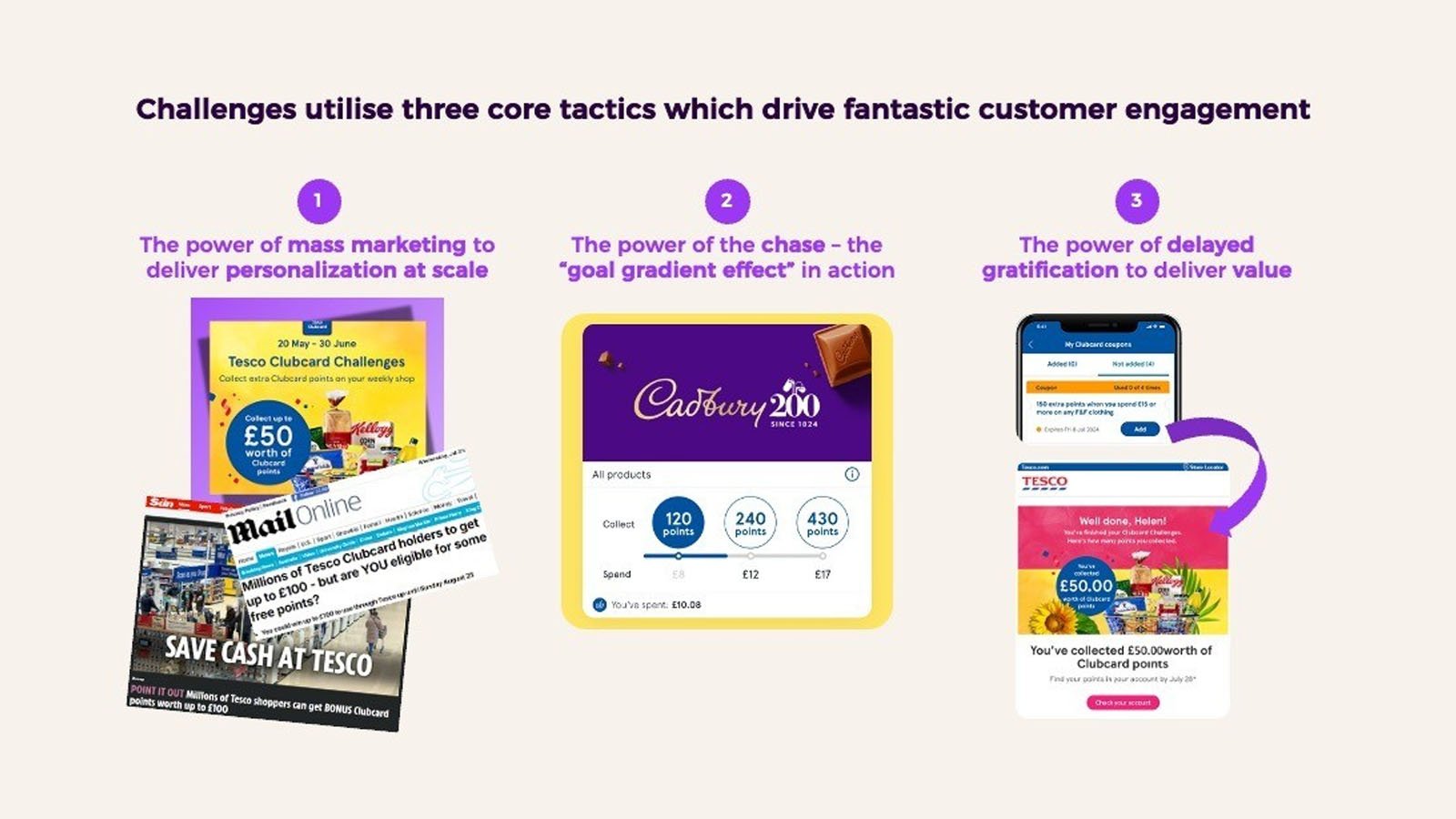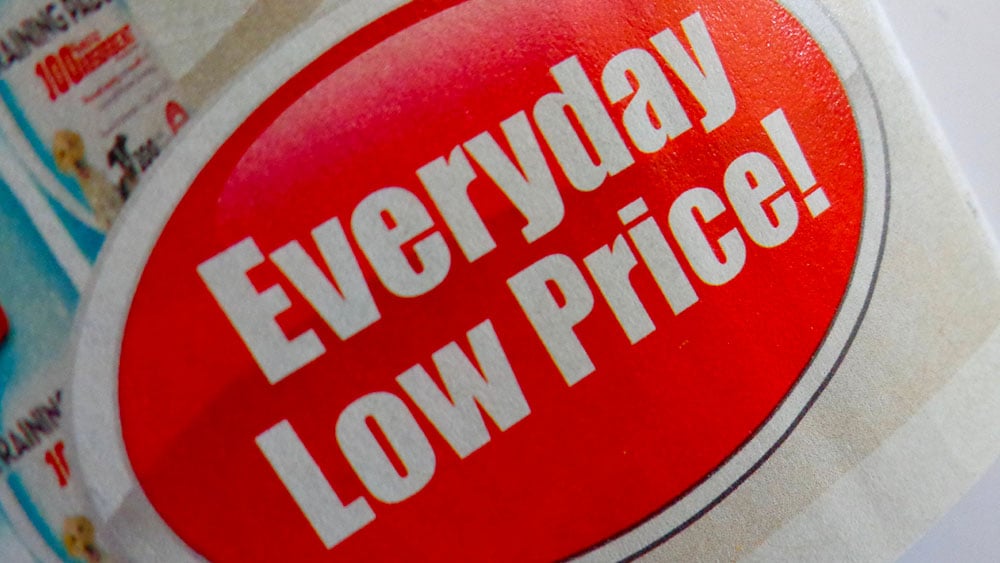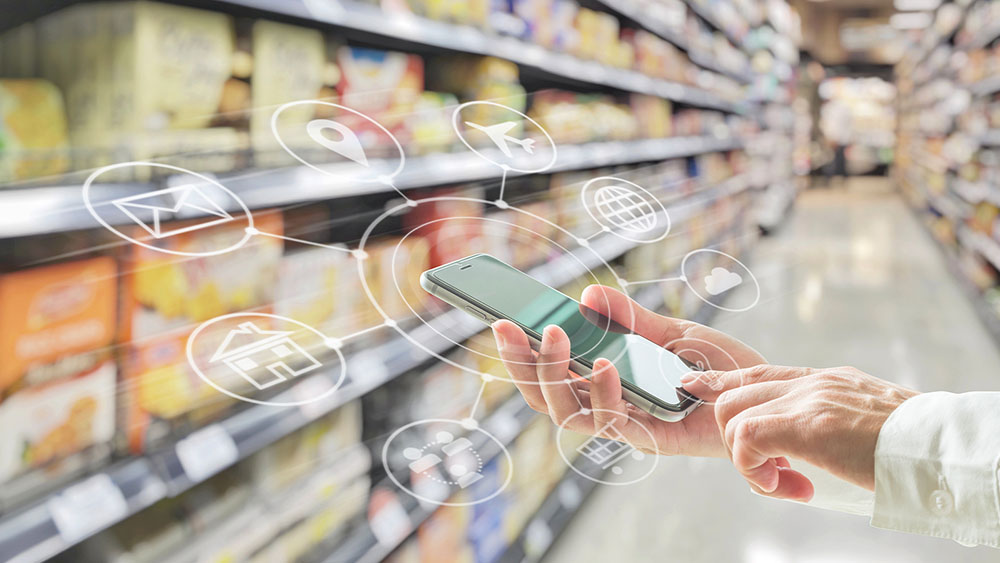2 Min. Lesezeit
Three Key Reasons Why Challenge Offers Drive Consumer Engagement
Learn how personalized challenge offers can boost consumer engagement and drive incremental sales, leveraging psychology and marketing strategies for ...
Erhalten Sie die neuesten Erkenntnisse, Untersuchungen und Nachrichten direkt in Ihren Posteingang.
Außerdem können Sie die 2. Ausgabe von Omnichannel Retail von Tim Mason & Sarah Jarvis gewinnen!
Kein Spam. Das versprechen wir. 💜
AIR
Acquire. Interact. Retain.
Bringen Sie Leben in Ihre Kundenbeziehungen
Wie der britische Lebensmitteleinzelhändler ASDA die führende Loyalty Plattform AIR und die Expertise von Eagle Eye nutzte, um in nur 3 Monaten das Loyalty-Programm "ASDA Rewards" einzuführen.

Two months into 2024, CEOs are already presented with two familiar challenges: a persistently value-conscious consumer and the need to create tailored shopping experiences.
These challenges, combined with the fact that the industry has entered an arms race to harness new technologies to grab consumers' attention and win their loyalty--90% of retailers are already investing in AI to elevate the retail journey--have prompted retailers to act.
Yet AI is only one tool, and while it can influence the overall shopping experience, it’s only an instrument to advance more fundamental retail strategies. Let’s walk through these core retail trends and discuss how they can result in a bumper year for retailers.
AI and machine learning have been instrumental in making one-to-one personalization a reality. Say goodbye to limited mass-produced offers and hello to offers that customers want when they want them. Consumers, for their part, can't wait: our Grocery's Great Loyalty Opportunity report found that 84% of consumers believed personalized recommendations would help save money.
AI's advancing capabilities enable the type of personalization customers expect. AI allows retailers to tailor offers to shoppers on the fly, leveraging a mix of historical data, contextual understanding, and real-time actions to determine what customers want "now" with a high degree of accuracy. In this way, AI is advancing "Marketing in the Moment," targeting customers with specific, bespoke messages triggered by various contextual factors (for example, the time and location) that can supercharge offer redemption and drive incremental spending.
Retailers have always dreamed of implementing this level of personalization, but technological constraints prevented it. The rise of AI has freed retailers from this constraint and is already revolutionizing how customers shop. According to the Boston Consulting Group, retailers implementing one-to-one personalization saw revenue increase by 25% or more. In a similar study from Think With Google, personalized shopping experiences led to increased spending, with 40% of shoppers spending more when presented with an experience designed around them.
The message here is that advanced personalization is a proven technique for increasing shopper spending, conforming to customer expectations, and keeping pace with forward-thinking competitors. With the rise of AI, it should become more effective and widespread throughout the industry.
Smartphones are command centres that unify the online and offline worlds. Practically everyone possesses a smartphone, and most consumers use it to inform their shopping experiences.
For example, 81% of shoppers often begin their journeys online through smartphones. It's an indication the barrier between online and in-store has been broken. For retailers, this is an opportunity to reimagine the buying cycle and take a more involved role in shoppers' decision-making process, given that 80% of U.S. shoppers are digitally influenced at some stage of the shopping journey.
Traditionally, shopping has been defined as "phone-in-pocket," meaning the driving force of an in-store experience is what people see in front of their faces, with minimal digital influence. In 2024, we are witnessing phone-out shopping made manifest.
One example of a brand that has made tremendous strides in unifying online and offline is Nike; they’ve made their app a core part of in-store shopping to develop the phone-out experience.
For example, Nike app users can scan QR codes to receive shoes in their size to try on. They can also use their app to try on items using their smartphone camera. Moreover, integrated payment options within the app allow in-store shoppers to make purchases without ever visiting a checkout.
Other retailers have attempted to develop the phone-out experience in the past, but their features were often impractical and fell into the "Entertainment" category. The features never made the in-store experience more practical, convenient, or value-driven. Despite the potential of the in-store digital influence, is this what most customers really want?
Research from Grocery Doppio shows customers already use digital tools to augment the in-store experience before entering the door. They found that 77% made shopping lists, 76% confirmed whether an item was available, and 69% wanted to pinpoint an item’s exact in-store location.
This shows that shoppers are familiar with and prefer shopping augmented by their mobile devices. From a retailer's perspective, this extends beyond directly improving the retail journey. Phone-based actions provide vital data that feeds back into advanced personalization. In this way, phone-out shopping can continue to enhance a customer's individualized experience with the retail brand.
The idea of channels in retail is dissolving and may disappear in 2024 – and not just from the consumers' perspective. Customer data generated in both online and offline shopping channels is being collected and connected more frequently and effectively, resulting in more complete customer insights and the collapse of information siloes.
Major brands like Nike rely on data from tens of millions of interactions with its brand. The more efficiently that data can flow across online and in-store barriers, the more effective its sales, engagement, and marketing strategies can be.
Siloing unnecessarily separates retail operations and reduces the data available to retail personalization platforms. Instead, unifying all channels to create an omnichannel shopping experience aligns with how real people shop and empowers retailers to deliver the one-to-one personalization that customers expect.
In his recently updated book, Omnichannel Retail: How to Build Winning Stores in a Digital World, Eagle Eye CEO Tim Mason highlighted how brands like UK coffee chain Pret a Manger have already adapted to an omnichannel, silo-less retail world.
Pret a Manger took the bold step of unifying its subscription service, Club Pret, and its loyalty program, Pret Perks, into a fully integrated channel. In other words, information flows between them, giving the brand more insights into what customers want, how they behave, and their trigger points.
This has established Pret a Manger as one of the changemakers in delivering an omnichannel retail experience, and it’s already worked. Although Pret grew its business by positioning itself as a brick-and-mortar brand, 42% of its transactions were digital in the second half of 2023.
Data is the driving force behind omnichannel retail. It informs everything from high-level marketing campaigns to the real-time personalization that’s fast becoming standard. Retail brands can truly execute next-generation retail marketing strategies only by ensuring that data flows freely across channels and platforms.
These three trends are underpinned by the need to create more individualized, convenient, and seamless customer experiences; AI-powered personalization ensures that customers receive the offers that resonate with them at the optimal time to act on them. Phone-out shopping enhances the in-store experience and provides added value to the shopper. Cross-channel data sharing creates the insights necessary to recognize each customer as an individual.
As we stand on the brink of the 2024 Retail Revolution, the stakes have never been higher for brands to embrace these transformative trends.
Retailers at the forefront of customer experience innovation are not just preparing for the future; they are defining it. By integrating AI-powered personalization, phone-out shopping, and cross-channel data sharing, they are setting new standards for customer engagement. This is more than a shift in strategy; it's a reimagining of the retail landscape, promising more convenience, personalization, and connection for every customer.
As these trends gain momentum, they will not only shape the future of retail but also redefine what it means to be truly customer-centric. The opportunity for retailers to lead this change and make an indelible impact on their customers' lives is immense. The question is, who will seize it and turn these predictions into reality? The journey to revolutionize retail is well underway, and the time to act is now.

Tim Mason verfügt über mehr als 25 Jahre Führungserfahrung in der Lebensmittel- und Einzelhandelsbranche mit einem starken Hintergrund in strategischem Marketing und Kundenbindung. Von 2010 bis 2012 war er stellvertretender CEO von Tesco und hatte eine Reihe von Führungspositionen in der Tesco-Gruppe inne, darunter CMO, wo er für die Einführung von Clubcard und Tesco.com verantwortlich war. Derzeit ist er CEO von Eagle Eye, einem SaaS-Technologieunternehmen, das sich auf die Bereitstellung von Omnichannel-Personalisierung in großem Maßstab für die weltweit führenden Einzelhändler konzentriert.
Get the latest insights, research, and news delivered straight to your inbox.
Plus, enter to win the 2nd edition of Omnichannel Retail by Tim Mason & Sarah Jarvis!
No spam. We promise. 💜

2 Min. Lesezeit
Learn how personalized challenge offers can boost consumer engagement and drive incremental sales, leveraging psychology and marketing strategies for ...

3 Min. Lesezeit
This blog explores the need for personalisation and the obstacles faced by EDLP retailers, as well as potential solutions.

5 Min. Lesezeit
In this first blog out of a three-part series, we look at the rise of personalisation, what it means, and why marketers should personalise their ...